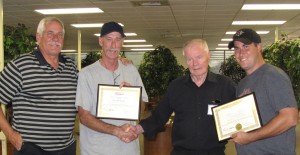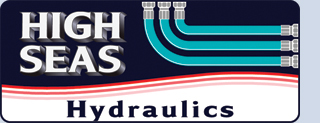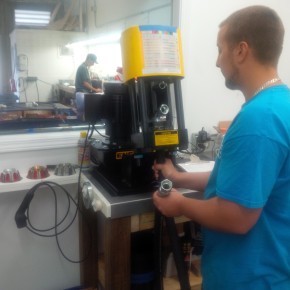 On August 25 and 26, we sent two of our Hydraulics technicians to Woodinville, WA, to attend WESMAR’s annual Sales and Technical Service Training Seminar. The seminar consisted of two days of intense classroom work along with time spent on the manufacturing floor assembling, testing and operating WESMAR’s stabilizer systems, bow and stern thrusters and hydraulic systems.
On August 25 and 26, we sent two of our Hydraulics technicians to Woodinville, WA, to attend WESMAR’s annual Sales and Technical Service Training Seminar. The seminar consisted of two days of intense classroom work along with time spent on the manufacturing floor assembling, testing and operating WESMAR’s stabilizer systems, bow and stern thrusters and hydraulic systems.
WESMAR is the inventor of the dual prop counter-rotating bow thruster and the electronic gyro powered roll fin stabilizers.
 At the end of the course, our technicians were awarded with a Certificateof Achievement for Successful Completion of the Mechanical Seminar on Installation, Maintenance and Operation of Bow Thrusters, Stabilizers, and Hydraulics. They are now Factory Certified to work on WESMAR Hydraulic Systems.
At the end of the course, our technicians were awarded with a Certificateof Achievement for Successful Completion of the Mechanical Seminar on Installation, Maintenance and Operation of Bow Thrusters, Stabilizers, and Hydraulics. They are now Factory Certified to work on WESMAR Hydraulic Systems.
“This was one of the more comprehensive training classes I have attended,” commented Jeremy Short, High Seas Hydraulics Foreman. “Not only did we have the opportunity to learn in a classroom setting, but being able to actually breakdown and rebuild the stabilizers and thrusters gave me real world experience that I can bring back to my customers.
At High Seas Hydraulics, we believe that the investments we make in our people are investments we make for our customers. We will continue seek out new courses and certifications to help guarantee we can offer our clients the best service in the industry.









